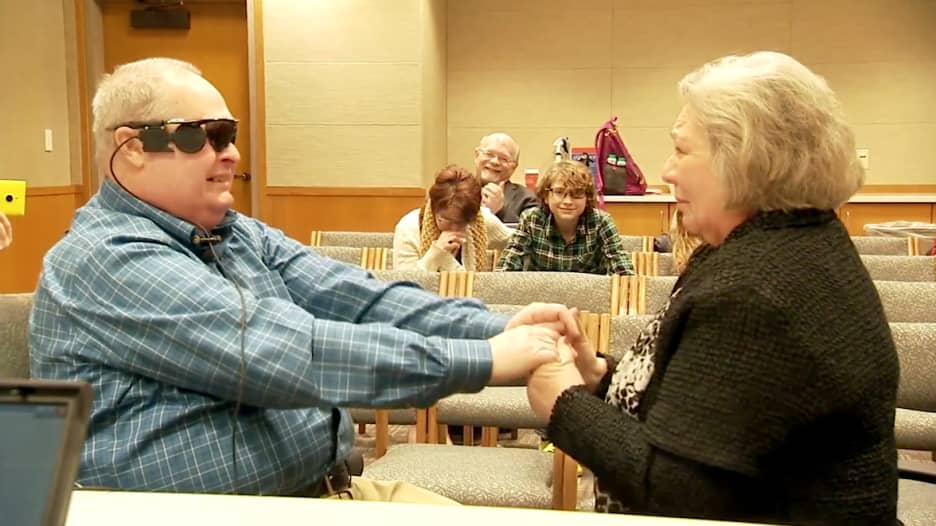دبي، الإمارات العربية المتحدة (CNN) -- دائماً ما يُطرح السؤال التالي: متى يجب على الأزواج التفكير في العلاج؟ فمن الشائع أن يكون أحد الشركاء لا يشعر بالسعادة، أو بعدم التواصل مع الشريك، أو أن احتياجاته غير وافية بالعلاقة الحميمة.
وقد يلجأ الثنائي للعلاج، وتكون العلاقة نفسها الموضوع الرئيسي، ولكن غالباً ما يتم تجاهل الأسباب الكامنة وراء الخلاف.
ومن الواضح أن الأزواج يجب ألا ينتظروا حدوث الأزمة حتى يذهبوا للعلاج، ولكن ما الذي يجب عليهم فعله؟
الوقت المناسب لرؤية المعالج
يجب على الأزواج طلب العلاج قبل فترة طويلة من اعتقادهم أنهم بحاجة إليه. ويعتقد معظم الخبراء بأن العلاج يمكن أن يكون جزءاً مهماً من العلاقة.
وقد أوضحت كريستي أوفرستريت، مستشارة في مجال الصحة العقلية، أن "غالبية المشكلات تبدأ صغيرة بين الزوجين، ثم تزداد عندما لا يتم حلها. وهنا يمكن أن يساعد العلاج، من خلال توفير الأدوات، والتقنيات، لتحسين حل النزاعات،" موضحة أن "غالبية الأزواج الذين أعمل معهم يقولون إنه كان يجب أن يبدأوا بالعلاج قبل سنوات".
ويمكن النظر إلى العلاج كجانب لا يتجزأ من حياة صحية، وذلك بدلاً من النظر إليه كحل للأزمة، بحسب ما أوضحت آشلي ن. غرينونو-دنتون، وهي معالجة شؤون الزواج والأسرة، إذ قالت: "يجب على الزوجين اتخاذ تدابير وقائية للحفاظ على صحة علاقتهما، مثل الذهاب إلى النادي"، موضحة أنه إذا لم يقم الزوجان بتمرين "عضلاتهما العاطفية"، فسيصبحان غير منسجمين وضعيفين ويتسببان بإلحاق الضرر بعلاقتهما."
ماذا يحدث أثناء علاج الأزواج؟
ورغم أن الاختلاف كبير بين أساليب المعالجين، إلا أن هناك بعض القواسم المشتركة، فعادة يتم في الجلسة الأولى التعرّف إلى المعالج، ومناقشة جوانب العلاقة التي يأمل الزوجان في تحسينها، وتحديد الأهداف من العلاج.
ويقوم بعض المعالجين بتخصيص واجبات للأزواج للعمل عليها قبل الجلسة التالية. وتقول الطبيبة النفسية سامانثا مانويتز: "يتم إنجاز معظم العمل، من خلال تجربتي، خارج العيادة."
ما هي المشاكل التي يمكن علاجها؟
ويطلب الزوجان العلاج للعديد من الأسباب، فبالإضافة إلى الخيانة الزوجية، تشمل أكبر المشكلات الجنس، وصعوبة التواصل، والمشاكل المالية، والتغيرات الكبيرة في الحياة مثل تكوين أسرة. ويُعتبر علاج الأزواج أيضاً فكرة جيدة إذا كان أحدهما يعاني من مشكلة قد تؤثر على العلاقة (مثل الاكتئاب)، أو ببساطة إذا كان يشعر بالملل.
ويمكن أن يوفر العلاج مساحة آمنة للحديث عن مواضيع حساسة مثل الجنس. كما يعتبر التواصل مصدر قلق كبير للأزواج.
وقد أوضحت سارة ناصر زاده، عالمة نفسية أن "هناك تواصل، ثم هناك تواصل فعال. ويحتاج كل طرف إلى أن يشعر بأنه يتم الاستماع له، وبأنه يحظى بالاحترام، والاهتمام اللازم. نحن نحلل أنماط التواصل القديمة، ثم نستبدلها بأنماط مجدية وأكثر فاعلية. كل هذه الأمور طُورت بالتعاون مع الزوجين، وفي سياق حياتهما اليومية."
ماذا لو رفض أحد الشركاء المشاركة في العلاج؟
هذا سيناريو شائع إلى حد ما في علاج الأزواج. وهنا يقول مايكل موران، معالج جنسي: "تحدث مع شريك حياتك على نطاق واسع حول سبب شعورك بالرغبة في الذهاب للمعالج، ولا تصر على الذهاب."
وفي حال التردّد لدى الشريك، يمكن للطرف الأول حضور العلاج بنفسه، وذلك قد يكون له تأثير جيد.
وقالت ماريسا نيلسون، طبيبة الزواج والأسرة: "بدلاً من انتظار الشريك الذي يرفض العلاج، يمكن للشخص الأول بدء العلاج من أجل تعزيز التحسن الذاتي والنمو الشخصي." حينها قد يتأثر الشريك المتردّد بهذه التغييرات الإيجابية، ويقرر الذهاب للعلاج.
كم من الوقت يجب أن يستمر العلاج؟
هذا السؤال ليس له إجابة واحدة مناسبة للجميع. ويعتمد الأمر على الزوجين والقضايا التي يعملان عليها. بالنسبة لبعض الأزواج، قد يحتاجون عدة جلسات لإعادة بناء العلاقة بينهما، بينما قد تبقى جلسات العلاج لسنوات بالنسبة للبعض الآخر.




